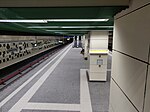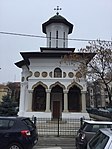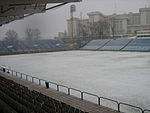Carol I National Defence University

The Carol I National Defence University (Romanian: Universitatea Naţională de Apărare "Carol I" (UNAp)) is an institution of higher education, located in Bucharest, Romania. It was established in 1889 by Stefan Falcoianu under the name Higher War School.. In 2005, it was renamed in honor of the Romanian King Carol I. The universities motto is "Great labor overcomes everything."The Carol I National Defence University seeks to train military and civilian experts in security and national defense. It undertakes scientific studies related to these matters when requested by relevant state authorities. The university is a member of the International Association for Military Pedagogy (IAMP), whose members include military and civilian professionals from military institutions of advanced learning.
Excerpt from the Wikipedia article Carol I National Defence University (License: CC BY-SA 3.0, Authors, Images).Carol I National Defence University
Șoseaua Panduri, Bucharest Uranus
Geographical coordinates (GPS) Address Phone number Website External links Nearby Places Show on map
Geographical coordinates (GPS)
| Latitude | Longitude |
|---|---|
| N 44.430048 ° | E 26.066211 ° |
Address
Universitatea Națională de Aparare "Carol I"
Șoseaua Panduri
010251 Bucharest, Uranus
Romania
Open on Google Maps









